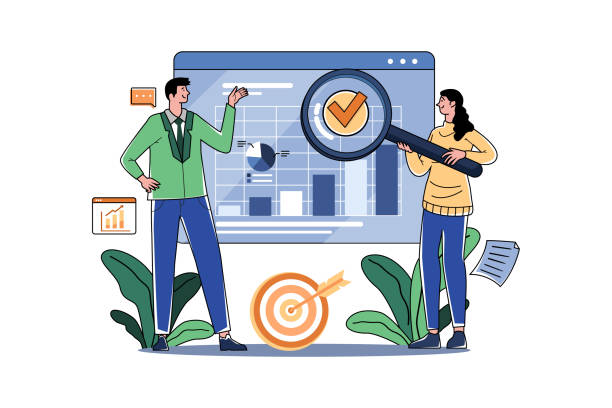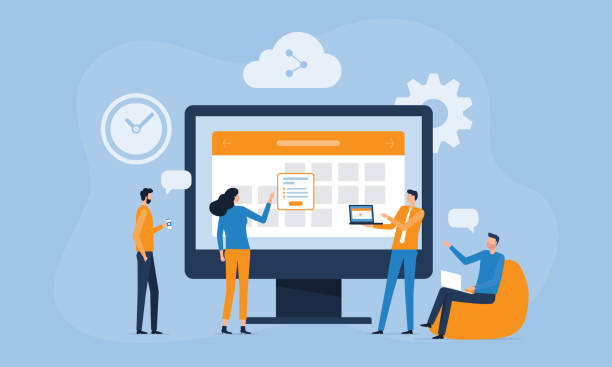Introduction and Importance of Secure Website Design in the Digital Age

In today’s world, where all businesses and services are moving towards digitalization, #secure_website_design is no longer an option, but an undeniable necessity.
Today, with the significant increase in cyberattacks, ensuring #website_security has become a top priority for developers and business owners.
An insecure website can lead to the loss of sensitive user data, identity theft, damage to brand reputation, and even heavy legal fines.
This educational section helps you gain a deeper understanding of the importance of this topic and why prevention is better than cure.
Any investment in secure website design is, in fact, an investment in user trust and the long-term sustainability of your business.
The discussion of #data_protection and #user_privacy forms the main pillars of a secure digital communication.
A correct understanding of these initial concepts is the first step towards creating a trustworthy online platform.
This explanatory approach helps you become familiar with the challenges and solutions in creating protected websites and to incorporate security principles from the very beginning of your design.
Did you know that a weak corporate website costs you many opportunities daily? Solve this problem forever with a professional corporate website design by Rasawab!
✅ Create a powerful and trustworthy image for your brand
✅ Attract targeted new customers and increase sales
⚡ [Get free website design consultation]
Common Web Security Threats and Challenges Ahead

Understanding #common_website_threats is the first step on the path to secure website design.
Cyber attackers use various methods to infiltrate systems, each requiring specific defensive mechanisms.
Among the most common of these threats are #SQL_Injection_attacks, which, by injecting malicious SQL codes, allow unauthorized access to the database.
Also, XSS (Cross-Site Scripting) attacks, by injecting malicious scripts into web pages, can steal user information or take control of their browsers.
A precise analysis of these threats shows that many of them originate from weaknesses in user inputs or incorrect data validation.
Furthermore, DDoS (Distributed Denial of Service) attacks, aimed at disabling websites by sending massive amounts of traffic, are always considered a serious threat.
Understanding these specialized threats and methods of countering them is a vital part of securing online platforms and helps designers establish a stronger defensive structure.
The discussion of thought-provoking content here can include questions about unknown vulnerabilities or zero-day exploits, which require a dynamic and proactive approach to counter.
Basic Security Principles in Web Coding and Architecture

To achieve secure website design, implementing security principles from the very initial stages of coding and architectural design is essential.
#User_input_validation is one of the most important of these principles; any data received from the user must be carefully reviewed and sanitized to prevent attacks such as SQL Injection or XSS.
Using #Prepared_Statements in database queries instead of direct input concatenation is an effective method to counter SQL Injection.
This section is a comprehensive guide for developers.
Also, proper error management and not displaying sensitive information to users during errors are other important considerations.
Security architecture, including layer separation, use of #least_privileges, and also Web Application Firewalls (WAF), can create additional layers of defense.
Secure website design requires a comprehensive approach that covers all aspects, from the most specialized coding details to server configuration.
Below, a table of essential measures for securing code is provided:
| Security Principle | Explanation | Practical Example |
|---|---|---|
| Input Validation | Careful review and filtering of all user inputs to prevent code injection. | Using `htmlspecialchars()` functions in PHP or server-side validation. |
| Prepared Statements | Separating query logic from data to prevent SQL Injection. | Using PDO in PHP or SQLAlchemy in Python. |
| Secure Error Handling | Not displaying technical error details to the end-user. | Displaying a generic error message instead of file path or query details. |
| CSRF Protection | Using tokens to prevent Cross-Site Request Forgery. | Generating and validating CSRF tokens for forms. |
These principles form the foundations of #secure_coding and significantly contribute to increasing #database_security and overall website security.
The Role of SSL/TLS Certificates in Data Protection

One of the most important elements in #secure_website_design and protecting user information is the use of SSL/TLS certificates.
#SSL_TLS_certificates are protocols for encrypting communications between the user’s browser and the website server.
This important explanation shows you how these certificates prevent sensitive information such as usernames, passwords, and credit card details from being intercepted by attackers.
When a website uses HTTPS (HTTP Secure), it means its communication is encrypted with an SSL/TLS certificate, and a green padlock icon appears in the browser’s address bar.
This not only increases user trust but also has high importance for website SEO (Search Engine Optimization), as search engines prefer HTTPS websites and give them higher rankings.
Correct implementation of SSL/TLS is a specialized but vital step in any secure website design process.
The choice of certificate type (Domain Validation, Organization Validation, Extended Validation) also depends on the type of business and the level of trust you wish to instill in your users.
Failure to use SSL/TLS can lead to browser security warnings for users, which severely damages your website’s credibility and disrupts the user experience.
Did you know that customers’ first impression of your company is your website? Multiply your business’s credibility with a powerful corporate website from Rasawab!
✅ Exclusive and eye-catching design tailored to your brand
✅ Improved user experience and increased customer acquisition
⚡ Get a free consultation!
Secure Authentication and Access Management
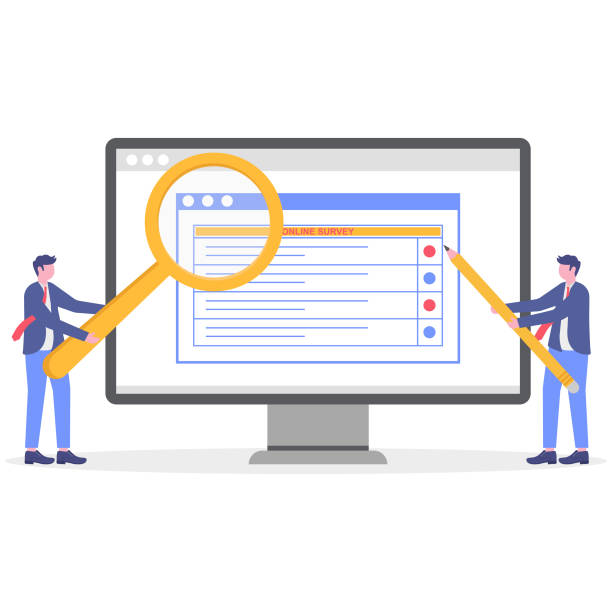
#Authentication_systems and #access_management are the main pillars of any secure website design.
Ensuring that only authorized users have access to specific resources is vital.
This section is a comprehensive guide for implementing strong authentication methods.
Using #strong_passwords and regular password change policies is the first step.
However, implementing #two-factor_authentication (2FA) or #multi-factor_authentication (MFA) is strongly recommended.
These methods add another layer of security, even if the password is compromised.
In addition to authentication, access management is also crucial; meaning each user or role should only have access to the resources and functionalities required for their tasks (the principle of #least_privilege).
This specialized approach helps prevent #unauthorized_privilege_escalation.
Using reputable frameworks for implementing website login systems, instead of coding from scratch, can reduce many common vulnerabilities.
This is an important educational point that many developers should pay attention to.
The design of this part of the website should be such that even in the event of repeated attacks, user information is not compromised, and it can resist repeated unsuccessful login attempts through mechanisms such as Rate Limiting or account lockout after several failed attempts.
Backup and Data Recovery Strategies

Even with the best secure website design approaches, unforeseen incidents such as server failures, malware attacks, or human error can occur.
Therefore, #regular_backup and having a #Disaster_Recovery_Plan are a vital component of #website_security.
This explanatory section addresses the importance and correct methods of backup.
All website data, including files, databases, and configurations, should be backed up regularly and in multiple separate locations (e.g., one copy on the same server, one copy in the cloud, and one copy in another physical location).
The frequency of backups also depends on the extent of website changes; for dynamic websites with a lot of content, daily or even hourly backups are recommended.
Furthermore, more important than merely backing up is testing the recovery process.
A backup that cannot be recovered is worthless.
This section guides you on how to ensure that when needed, you can quickly and reliably restore your website to normal operation.
Having a detailed disaster recovery plan not only guarantees #website_stability but also minimizes the costs incurred from downtime during a crisis.
This is a vital aspect of #risk_management in securing online platforms.
Vulnerability Assessment and Penetration Testing

No security system is complete without #continuous_testing.
#Vulnerability_assessment and #penetration_testing are specialized tools that help you identify and fix potential weaknesses in your secure website design.
This analytical section discusses the importance of these processes.
Vulnerability assessment involves using automated tools to scan the website and identify known weaknesses.
While penetration testing is a more manual and in-depth approach where a security expert (or Red Team) attempts to infiltrate the system by simulating real attacks.
The results of these tests help developers fix vulnerabilities before real attackers discover them.
This process should be performed periodically and after any major changes to the website.
This educational approach shows you how to evaluate your website’s security with a more aggressive approach.
Investing in this area is equivalent to investing in #cyber_prevention, which in the long run prevents much higher costs that could result from a successful attack.
To better understand the differences, see the table below:
| Feature | Vulnerability Scan | Penetration Test |
|---|---|---|
| Method | Automated, scanner-based | Manual, by human experts |
| Goal | Identifying known vulnerabilities | Attempting to exploit vulnerabilities and infiltrate the system |
| Scope | Usually broader, but shallower | Deeper, but limited to specific targets |
| Result | List of vulnerabilities | Comprehensive report of exploitable weaknesses and remedial solutions |
These tools and approaches are complementary and vital for ensuring your #website_security.
Continuous Website Security Updates and Maintenance
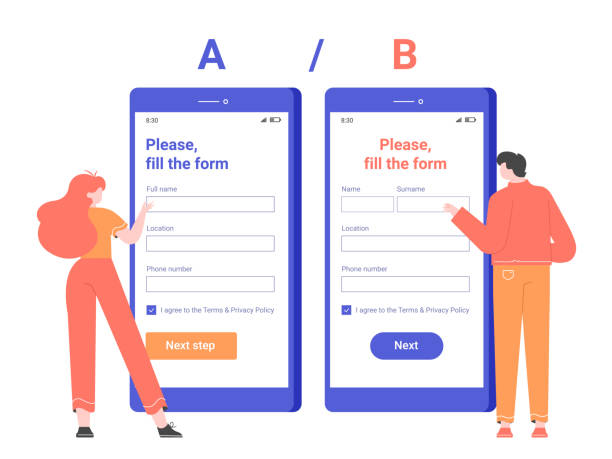
The concept of #secure_website_design does not mean “set it once and forget it”.
Security is an ongoing process that requires regular updates and maintenance.
This news section discusses the importance of maintaining security dynamism.
#Updating_the_server_operating_system, used software (such as PHP, WordPress or other CMS), plugins, and themes is one of the most important measures to combat newly discovered vulnerabilities.
Software and system developers continuously release security patches to close security loopholes.
Delaying the installation of these updates can expose your website to cyberattacks.
In addition to updates, #continuous_website_monitoring for suspicious activities, reviewing server logs, and having Intrusion Detection Systems (IDS) and Intrusion Prevention Systems (IPS) active are also essential.
This is a key guide for maintaining the integrity and overall website security.
Cybersecurity is a continuous arms race, and new threats emerge every day.
Therefore, only with a proactive approach and continuous maintenance can one ensure secure website design and make it resilient against potential attacks.
Are you missing out on business opportunities because of an outdated website? With Rasawab, permanently solve the problem of not attracting potential customers through your website!
✅ Attract more high-quality leads
✅ Enhance brand credibility in the eyes of customers
⚡ Get a free corporate website design consultation
Accountability in Web Security: A Shared Responsibility
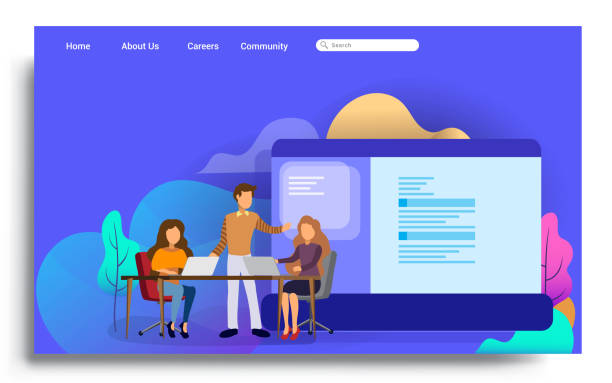
When it comes to secure website design, the responsibility does not solely rest with developers.
Web security is a shared responsibility that encompasses all stakeholders, from designers and developers to server administrators and even end-users.
This thought-provoking content poses the question: Who is truly responsible for website security? In fact, each of these groups plays a vital role in maintaining the security of online platforms.
Developers must adhere to secure coding principles and use secure frameworks.
System administrators must keep servers updated and apply security configurations.
But users also need to use strong passwords, be wary of phishing attacks, and keep their software updated.
A deep analysis shows that many successful cyberattacks are the result of a chain of weaknesses at different points.
Educating and training users about potential risks and best security practices is a crucial part of the website security strategy.
Without cooperation and commitment from everyone, even the most secure designs can become vulnerable to human error.
This approach can also be engaging, if we raise user awareness with security games and simulations.
The Future of Secure Website Design and Artificial Intelligence

The future of #secure_website_design is rapidly evolving, and technologies like #Artificial_Intelligence (AI) and #Machine_Learning (ML) will play an increasing role in it.
This analytical section examines future trends in cybersecurity.
AI can be very effective in detecting new attack patterns, analyzing user behavior to identify suspicious activities, and even automating responses to threats.
On the other hand, attackers will also use AI to make their attacks more sophisticated, which doubles the need for smarter defensive approaches.
#Cloud_Security and #blockchain_technology are also other aspects that will shape the future of secure website design.
It’s fascinating to imagine how websites can automatically protect themselves and even learn how to resist new attacks.
These advancements create new challenges and opportunities for web security professionals and highlight the imperative to stay updated with the latest technologies and threats more than ever.
Securing online platforms in the future will require a comprehensive perspective and the adoption of emerging technologies.
Frequently Asked Questions
| Row | Question | Answer |
|---|---|---|
| 1 | What is secure website design? | Secure website design is a process in which websites are built with security measures in mind from the initial stages of development to protect against cyberattacks, unauthorized access, and data loss. |
| 2 | Why is secure website design important? | Website security is crucial for maintaining user trust, protecting sensitive information (personal and financial), preventing damage to brand reputation, and complying with privacy and security regulations (such as GDPR). A security breach can lead to financial and legal damages. |
| 3 | What are the most common cyberattacks a website faces? | Some of the most common attacks include SQL Injection, Cross-Site Scripting (XSS), Distributed Denial of Service (DDoS), Brute Force, and Credential Stuffing attacks. |
| 4 | What is SQL Injection and how can we prevent it? | SQL Injection is a type of attack where an attacker attempts to manipulate the database or extract information by injecting malicious SQL codes into site inputs. To prevent it, one should use Prepared Statements/Parameterized Queries, ORM (Object-Relational Mapping), and strict input validation. |
| 5 | What is Cross-Site Scripting (XSS)? | XSS is a type of attack where an attacker injects malicious scripts (usually JavaScript) into web pages, which are then executed by other users’ browsers. This can lead to the theft of cookies, session information, or alteration of the website’s appearance. |
| 6 | How can Brute Force attacks on login pages be prevented? | To prevent Brute Force attacks, one should use CAPTCHA, limit the number of unsuccessful login attempts (Account Lockout), two-factor authentication (2FA), and complex and long passwords. |
| 7 | What is the role of HTTPS in website security? | HTTPS encrypts the communication between the user’s browser and the website server using SSL/TLS. This prevents eavesdropping, tampering, or forgery of information during transmission and increases user trust. |
| 8 | What is the importance of Input Validation in security? | Input validation is the process of checking and sanitizing data entered by the user. This prevents malicious code injection, XSS attacks, SQL Injection, and other vulnerabilities, ensuring that data conforms to the expected format. |
| 9 | Why are regular updates of website systems and software essential? | Regular updates of the operating system, CMS (such as WordPress), plugins, themes, and libraries used address known security vulnerabilities. Hackers often exploit weaknesses in outdated software to infiltrate. |
| 10 | What role do regular backups play in secure website design? | Regular and tested backups of website data (database and files) are a vital layer of defense against data loss due to cyberattacks, human errors, or hardware failures. This enables quick website recovery in the event of a disaster. |
And other services of Rasa Web Advertising Agency in the field of advertising
Smart Marketing Automation: Designed for businesses seeking online growth through precise audience targeting.
Smart Conversion Rate Optimization: A combination of creativity and technology to increase website traffic through attractive UI design.
Smart Marketing Automation: Revolutionize website traffic increase with the help of real data.
Smart Digital Advertising: An innovative platform to improve website traffic increase with intelligent data analysis.
Smart Google Ads: A blend of creativity and technology to improve SEO ranking through custom programming.
And over hundreds of other services in internet advertising, advertising consultation, and organizational solutions
Internet Advertising | Advertising Strategy | Advertorials
Resources
Website Security Checklist
Key Tips for Website Security
Best Practices for Web Security
Principles of Secure Website Design
? For your business to shine in the digital world, Rasawab Afarin is by your side with expertise in multilingual website design and comprehensive digital marketing solutions.
📍 Tehran, Mirdamad Street, next to Bank Markazi, Kazerun Jonubi Alley, Ramin Alley, No. 6


